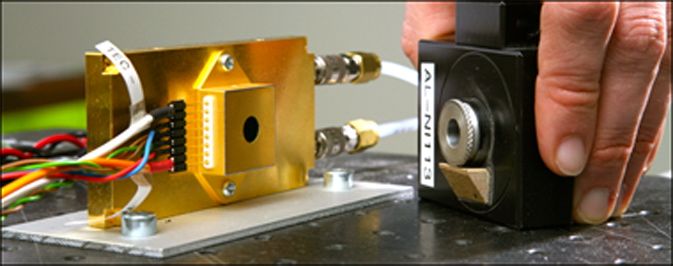
Solitons, Self-Induced Transparency,
and Modelocking in Quantum Cascade Lasers
Professor Curtis Menyuk
University of Maryland, Baltimore County
1:00-2:15pm Friday, 18 March 2011, ITE 227, UMBC
Standard semiconductor lasers operate in a limited wavelength range, below about 4 microns. Quantum cascade lasers (QCLs) that operate in the mid-IR and far-IR have important applications to medicine, environmental sensing, and national security. While short pulse lasers (~100 fs) are available for standard semiconductor lasers, that is not the case for QCLs. Standard passive modelocking is hard to do in QCLs because of their long coherence times and short gain recovery times. We propose a fundamentally different approach, based on the self-induced-transparency (SIT) effect, that turns these weaknesses into strengths. Solitons, modelocking, and SIT are all reviewed at the beginning of the talk.
Curtis R. Menyuk was born March 26, 1954. He received the B.S. and M.S. degrees from MIT in 1976 and the Ph.D. from UCLA in 1981. He has worked as a research associate at the University of Maryland, College Park and at Science Applications International Corporation in McLean, VA. In 1986 he became an Associate Professor in the Department of Electrical Engineering at the University of Maryland Baltimore County, and he was the founding member of this department. In 1993, he was promoted to Professor. He was on partial leave from UMBC from Fall, 1996 until Fall, 2002. From 1996 – 2001, he worked part-time for the Department of Defense, co-directing the Optical Networking program at the DoD Laboratory for Telecommunications Sciences in Adelphi, MD from 1999 – 2001. In 2001 – 2002, he was Chief Scientist at PhotonEx Corporation. For the last 20 years, his primary research area has been theoretical and computational studies of lasers, nonlinear optics, and fiber optic communications. He has authored or co-authored more than 220 archival journal publications as well as numerous other publications and presentations. He has also edited three books. The equations and algorithms that he and his research group at UMBC have developed to model optical fiber systems are used extensively in the telecommunications and photonics industry. He is a member of the Society for Industrial and Applied Mathematics. He is a fellow of the American Physical Society, the Optical Society of America, and the IEEE. He is a former UMBC Presidential Research Professor.
· directions · talks · events ·